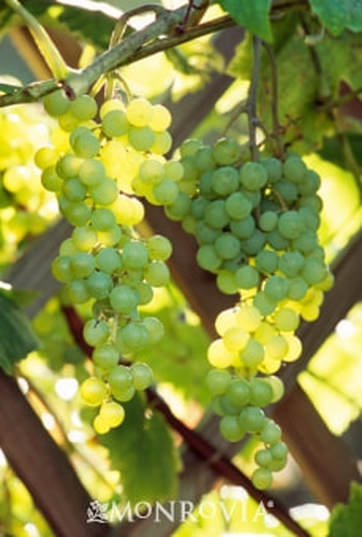HIGHLIGHTS: Hardy female Excellent flavor Heavy producer Actinidia arguta Ogden Point is a very hardy female Kiwi vine. This kiwi vine produces a heavy crop of small green cocktail kiwis! It will need Actinidia arguta Hardy Male to pollinate it. GROWTH & CARE HEIGHT: 4-20 feet PLANT NAME: Actinidia Arguta Ogden Point USDA GROW ZONE: 5-8 FEATURES: Cold Hardy EXPOSURE: Full Sun, Partial Sun BLOOMS: Spring FRUITING SEASON: Fall APPLICATIONS: Edible Garden, Trellis, Arbors HABIT: Vining FLOWER COLOR: White PURPOSE: Food Production
SOIL MOISTURE: Average Water
FOLIAGE COLOR: Green
Size & SpacingMature SizeWhen your plant matures, it will be approximately 4 - 6' tall x 12" wide.Recommended SpacingWe recommend spacing these plants 6 - 8' apart to ensure room for growth.Recommended Pollinators
This variety is self pollinating.In many cases, you may still want to plant pollinating partners to increase the size of your crops, but with self-pollinating varieties doing so is optional. You'll get fruit with only one plant!
SOIL MOISTURE: Average Water
FOLIAGE COLOR: Green
Size & SpacingMature SizeWhen your plant matures, it will be approximately 4 - 6' tall x 12" wide.Recommended SpacingWe recommend spacing these plants 6 - 8' apart to ensure room for growth.Recommended Pollinators
This variety is self pollinating.In many cases, you may still want to plant pollinating partners to increase the size of your crops, but with self-pollinating varieties doing so is optional. You'll get fruit with only one plant!
Plant DescriptionVigorous deciduous vine with bold-textured, deep green foliage. Grown for its clusters of small, entirely seedless, crispy sweet fruit which turns golden yellow when fully ripe. Excellent used as an ornamental, for summer shade, arbors or leafy walls. Good early season grape.
- Overview
Light Needs:
Full sun
Watering Needs:
Once established, needs only occasional watering.
Average Landscape Size:
Fast-growing vine to 20 to 25 ft. each year.
Key Feature:
Edible Fruit
Blooms:
Inconspicuous; prized for fruit and foliage.
Landscape Uses:
Espalier, Kitchen Garden, Mass Planting, Privacy Screen - Detail
Botanical Pronunciation:VI-tis luh-BRUS-kuh
Plant type:Vine - Requires Support
Deciduous/evergreen:Deciduous
Growth rate:Fast
Average landscape size:Fast-growing vine to 20 to 25 ft. each year.
Special features:Bird Friendly, Edible, Fall Color, Fast Growing, North American Native Selection, Showy Fruit, Waterwise
Foliage color:Green
Blooms:Inconspicuous; prized for fruit and foliage.
Flower color:Green
Garden styleMediterranean
Design IdeasGrapes can grow wherever there is direct sun and sufficient air circulation. They're traditionally trained overhead onto shade arbors over outdoor living spaces. Also popular for training along fence lines and up over arbor gateways. May be cultivated on standard wire trellis used in commercial vineyards.
Companion PlantsRosemary (Rosmarinus); Lavender (Lavandula); Raspberry (Rubus); Rose (Rosa); Fig (Ficus) - Care
Care Information
Best in deep, loamy, well-drained soils but quite adaptable. Follow a regular watering schedule during the first growing season to establish a deep, extensive root system. Water deeply, less frequently when established; supplement in extreme heat. Feed with a general purpose fertilizer. Provide a trellis or arbor as support. Prune annually to control size.Pruning time: winter.
Light Needs:
Full sun
Watering Needs:
Once established, needs only occasional watering. - History & Lore
History:
The European grape, Vitis vinifera is age old but limited to warm climates with a long growing season. . To expand cultivation into northern states, breeders began working with a wild American native, V. labrusca which matured over a much shorter season. It is native from New England to Georgia with widespread adaptability in more humid climates. It was crossed with the European to produce the Concord grape and then this variety followed for home gardens.
Lore:
It is believed that the European grape originated in Asia Minor, probably around Turkey, from a wild plant that produced small fruit. Over millennia it was selected for ever larger fruit to eventually produce the array of wine grapes cultivated today.
